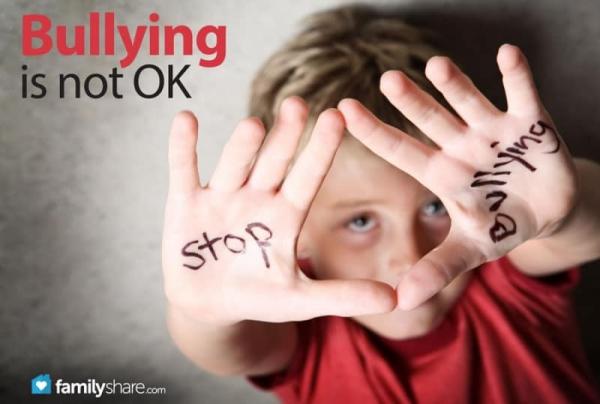
The bullies we imagine are brutish, mean, unpopular - and someone else's child. Unfortunately, this stereotype is often wrong and almost any child - including your own - can engage in bullying behavior.
Research from the U.S. Department of Health and Human Services indicates that children identified as bullies are often popular and exhibit high levels of self-esteem. Instead of being social outcasts, they often make friends easily.
The department lists several recurring traits of children who bully others:
-
Average or above average self-esteem;
-
Impulsive personalities;
-
Lack of empathy;
-
Difficulty conforming to rules;
-
Positive attitudes toward violence;
-
Some bullies enjoy high status and esteem from their peers, and even teachers. These are called hidden bullies - popular children who exhibit aggression (persistent arguing, fighting, getting in trouble).
Peer pressure can be a reason for bullying. In other words, kids will bully other children to be accepted or to fit into a group.
Children who bully others fall into two main categories
One group
includes children who are well-connected to their peers, have social power, are overly concerned about their popularity and like to dominate or be in charge of others.
In the second group
are children who are more isolated from their peers and may be depressed or anxious, have low self-esteem, be less involved in school, be easily pressured by peers, or not identify with the emotions or feelings of others.
According to information from the U.S. Department of Health and Human Services there are several family risk factors prevalent among children who become bullies. They include:
-
A lack of parental warmth and involvement;
-
Overly-permissive parenting;
-
Lack of parental supervision;
-
Harsh, physical discipline; and
-
A model of bullying behavior at home.
Of course, even children from good families with excellent parenting can sometimes adopt bullying actions.
Dan Olweus, a psychologist who pioneered bullying research, identified three essential elements of bullying behavior:
1. The behavior is aggressive and negative;
2. The behavior is carried out repeatedly; and
3. The behavior occurs in a relationship where there is an imbalance of power between the parties involved.
We normally think of power as physical, such as a big kid picking on a smaller child. But there are also social forms of power, like a popular child acting negatively toward someone with lesser social status. It might even be a smart, smaller child taking advantage of a less intelligent, older or bigger child.
Obviously, bullying comes in many forms. Physical abuse can include actions like spitting, tripping, rude gestures, or even breaking or taking someone else's things. Verbal abuse can be teasing or taunting, threats, name calling, inappropriate sexual comments, or spreading rumors. Cyberbullying involves the use of electronic technology like cell phones, computers and tablets. It can include texting, emails, social media, chats and websites.
If you see signs of bullying behavior in your child or you suspect that he or she could be picking on other children, there are several actions you should take:
-
Explain to your child that you take bullying seriously and that you won't allow such behavior.
-
Make an effort to spend more time with your child and monitor his or her activities. Learn about your child's friends. Find out what they like to do and where they hang out.
-
Reinforce positive behavior by encouraging participation in activities like music lessons, clubs, Scouting, sports or church activities. Make sure there is plenty of adult supervision.
-
Talk to your child's teacher or principal. If you think there is a need for additional help, consult with a mental health professional, clergyman or school counselor.
If you find out that your kid's a bully, don't despair. They just need your help and your love. For parents who need additional information about bullying, the U.S. Department of Health and Human Services sponsors a website with information about bullying: www.stopbullying.gov. Bullying information can also be found at http://www.education.com/topic/school-bullying-teasing/.

